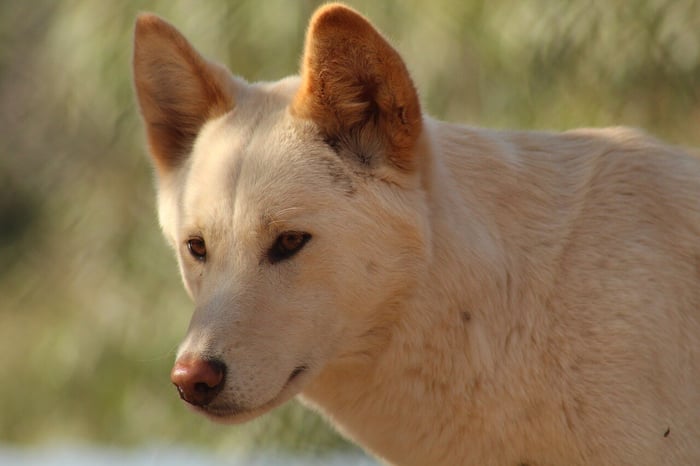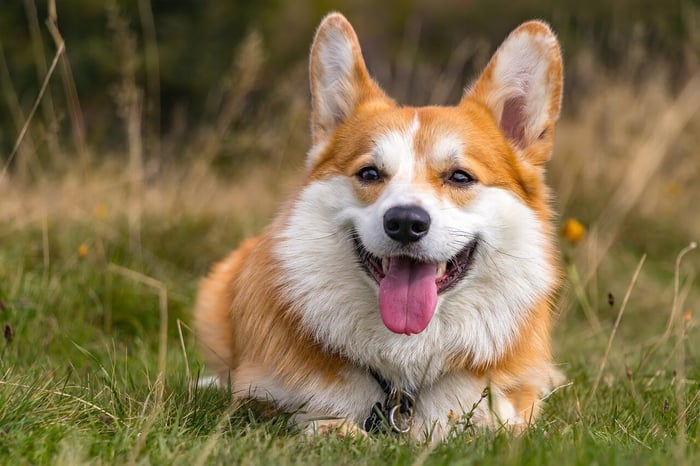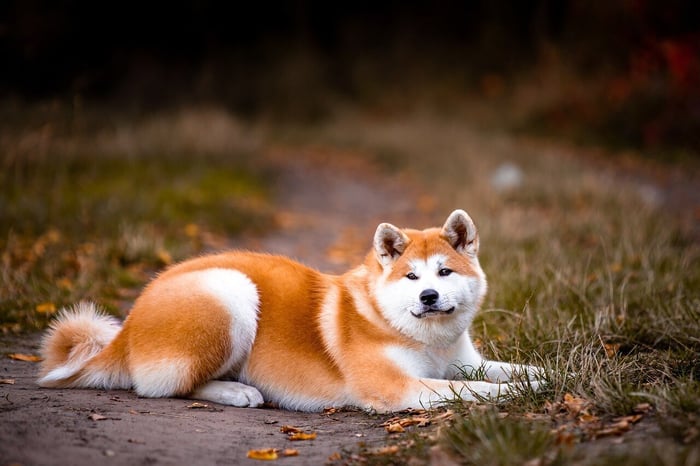The dingo (scientifically named Canis lupis dingo or Canis familiaris dingo) is a canine mainly located in Australia and certain regions of Southeast Asia. In contrast, to dogs (Canis lupis familiaris) dingoes are meat eaters that hold a crucial role in the Australian environment as both hunters and symbolic creatures. They impact the populations of sized Australian mammals such, as bandicoots and rat kangaroos by serving as primary mammalian predators. This piece delves into their traits and behaviors as the obstacles they encounter that contribute to their significance, in Australias natural legacy.
What is a Dingo?
The dingo (Canis dingo), also known as the Australian wild dog, is a native species that roams across mainland Australia. With its unique history, the dingo plays a critical role in the Australian ecosystem. Often confused with domestic dogs, the dingo is a wild species distinct from domestic dogs (Canis lupus familiaris), though both share a common ancestor.
The Origin of Dingoes: How Did They Arrive in Australia?
Dingoes are believed to have arrived in Australia's wild dog populations thousands of years ago. Early Asian seafarers likely brought these wild dogs to the continent, where they adapted to Australia’s vast and varied landscapes. Their descendants are now known as pure dingoes, and they have evolved into a species that thrives in desert regions, forests, and even the rugged terrain of Western Australia.
Some studies suggest that the dingo gene pool is closely related to the New Guinea singing dog, with both species having shared ancestors. However, despite their similarities, the dingo and the New Guinea singing dog are distinct, with the dingo found predominantly on the Australian mainland and the New Guinea singing dog found in the mountains of New Guinea.
Distinctive Physical Traits of the Dingo
Dingoes are medium-sized with distinctive features like erect ears, a bushy tail with a white tail tip, and a slender build. Their skull structure and sharp instincts make them highly adaptable hunters. Dingoes exhibit various coat colors, including sandy, reddish-brown, and black, which help them blend into different habitats. Known as Canis dingo or Canis lupus dingo, their physical traits distinguish them from both domestic dogs and other wild dogs.
What Does a Dingo Look Like?
Ever wonder what sets a dingo apart from your average dog? Here’s the scoop. Dingoes are quite the lookers with some unique features. First off, they're pretty lean and athletic - built for life in the wild. They usually weigh around 30 to 50 pounds, standing about as tall as a medium-sized dog.
Their fur? It's like a coat of many colors, ranging from golden to red, and even black and white. But, what really catches the eye is their bushy tail and pointy ears - always on the alert.
Dingoes are incredibly fascinating, due, to their ability to adapt to environments. Depending on where they live - in the deserts, forests, or even snowy mountain regions - their appearance can change a bit to suit their surroundings. Nature's way of giving them a helping hand!
The Dingo: A Wild Dog with Unique Characteristics
Appearance and Behavior of Dingoes
Dingoes are typically medium-sized dogs with an appearance similar to domestic dogs, but they have some key differences. They possess erect ears, a bushy tail, and a sleek, muscular body. Their coat ranges in color from sandy yellow to reddish-brown, and they are most commonly found with a white tip on the tail.
One of the most fascinating aspects of the Australian dingo is their behavior. Unlike domestic dogs, dingoes rarely bark and are more likely to howl. This trait links them to their wild dog ancestry and helps them communicate over long distances. In fact, dingoes howl in packs to mark territory or during hunting. They are also known as apex predators, hunting large and small prey, including rat kangaroos, rabbits, and even larger animals like wild sheep.
Solitary or Social: Dingo Packs and Mating
While many wild dogs prefer to form packs, solitary dingoes are quite common. Male dingoes are often seen roaming alone, especially in the desert regions of central Australia and Western and Central Australia. However, during mating season, female dingoes will attract alpha males for breeding. The alpha female leads the pack and plays a key role in hunting and raising dingo pups.

The Dingo's Day-to-Day Life
Unlike domestic dogs, dingoes have a pretty interesting routine. These untamed dogs are highly skilled, at adapting to their surroundings and ensuring their survival.
Social Creatures: Dingoes often hang out in packs, but it's not just for fun. These packs are like tight-knit families, helping each other hunt and survive. Sometimes, though, you'll find a dingo that prefers the solo life, especially when food is scarce.
Hunting and Diet: When it comes to mealtime, dingoes are pretty versatile. They have an instinct, for hunting. Will go after a wide range of prey including small rodents and even larger animals, like kangaroos. But they're not picky; they'll happily scavenge for food too, showing off their opportunistic side.
Nocturnal Adventures: Dingoes are mostly nocturnal, meaning they're active at night. This is when they do most of their hunting, taking advantage of the cooler temperatures and cover of darkness.
Territorial by Nature: Dingoes are also pretty territorial. They mark their area and take it seriously to protect their turf and pack.
Dingo Diet and Hunting Habits
As opportunistic carnivores, dingoes are skilled hunters. They are capable of hunting large prey like kangaroos or emus, but they are also adept at catching smaller animals when larger prey is scarce. Dingoes' diet is diverse, and they will consume a variety of mammals, birds, and reptiles. Their role as apex predators ensures they maintain a balanced ecosystem by controlling populations of smaller prey species.
The Dingo’s Role in Australia’s Ecosystem
Dingoes play an important role in the Australian ecosystem by regulating the populations of smaller animals. In places like South Australia, Southeastern Australia, and the Northern Territory, dingoes help maintain balance by preying on feral cats and feral dogs, which have caused significant harm to native species like small marsupials. The dingo populations help limit the numbers of these non-native animals, preventing them from outcompeting native species.
The Dingo Fence and Conservation Efforts
In Australia, the dingo fence is a significant barrier designed to control the movement of dingoes and protect livestock from potential predation. The fence, one of the longest structures in the world, stretches across parts of South Australia and the Australian mainland, effectively separating dingo populations from the fertile farmland areas where they could pose a threat to livestock.
Conservation efforts have also aimed to preserve the dingo’s gene pool, ensuring the survival of pure wild dingoes while minimizing the impact of dingo hybrids—dogs that have interbred with domestic dogs. These hybrids are less well adapted to the wild, threatening the survival of the pure dingo population.

Dingoes in Aboriginal Australian Culture
Dingoes hold a place, in Australias fabric particularly within the traditions of Aboriginal Australians. Their story encompasses not biology and ecology but intertwines with the rich tapestry of Australian culture.
Cultural Significance: In culture dingoes have always had a significant role. They are frequently depicted in stories, artwork and spiritual beliefs as symbols of resourcefulness and adaptability. Dingoes hold a meaning beyond being animals; they play vital roles in passing down knowledge and values through storytelling.
Symbolism and Mythology: In many Aboriginal myths, the dingo is seen as a wise figure, a clever survivor who embodies the spirit of the Australian landscape. These stories often highlight the dingo's intelligence and resilience, qualities highly respected in these cultures.
Contemporary Representation: Even today, the dingo's influence can be seen in modern Australian art and literature. They remain a representation of the untamed elements of the continent serving as a reminder of the bond, between the land and its indigenous creatures.
Conclusion: The Dingo’s Legacy in Australia
The dingo is a unique and fascinating species that continues to hold a special place in Australia’s wildlife. Whether roaming the desert regions of Western Australia, hunting in the forests of New South Wales, or howling across the plains of Southeastern Australia, the dingo remains a symbol of the wild spirit of Australia. Preserving the dingo, along with its role in the Australian ecosystem, is crucial for maintaining the biodiversity of this vast land.
By understanding the dingo’s diet, behavior, and the threats posed by feral dogs and dingo hybrids, we can work to protect this iconic species and ensure its survival for generations to come.












